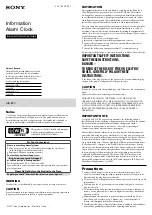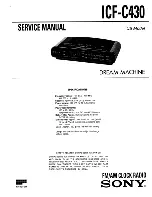
34
5) Turn the screw in the escapement stops so they are oriented as shown in the diagram below. The
stop on the left is turned so the rim farthest from the screw is down; the stop on the right is turned so
the rim farthest from the screw is to the right.
6) The weight pulley is suspended by the weight cord. Make sure the string passes under the pulley
wheel rather then beside it.
Caution: Before hanging the weight on the clock, be sure that the pallet arms are in the same
plane as the escape wheel. Also, when making adjustments, be sure that the pallet are will not
miss the escape wheel and cause the weight to drop rapidly to the floor.
7) Hang the weight shell hook on the lower dowel on the weight pulley, verifying that pallets one of
the pallets is catching the escape wheel before releasing the weight..
8) Gently push the pendulum to one side and release to start the clock’s motion.
9) There are two adjustments required for the clock to run properly: 1) setting the clock ‘in beat’ by
adjusting its orientation on the wall; 2) adjusting the escapement stops. Begin by getting the clock
approximately into beat as follows:
If the escape wheel stops on the left pallet arm, then shift the bottom of the clock to the right; if the
escape wheel stops on the right pallet arm, shift the bottom of the clock to the left. As you get close to
having the clock in beat, it will require very small adjustments of the clock’s position. Once the clock
appears to be in beat, or close to it, secure the position of the clock on the wall with masking tape.
Next, adjust the escapement stops as follows:










































